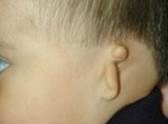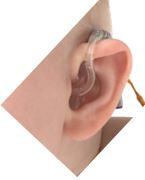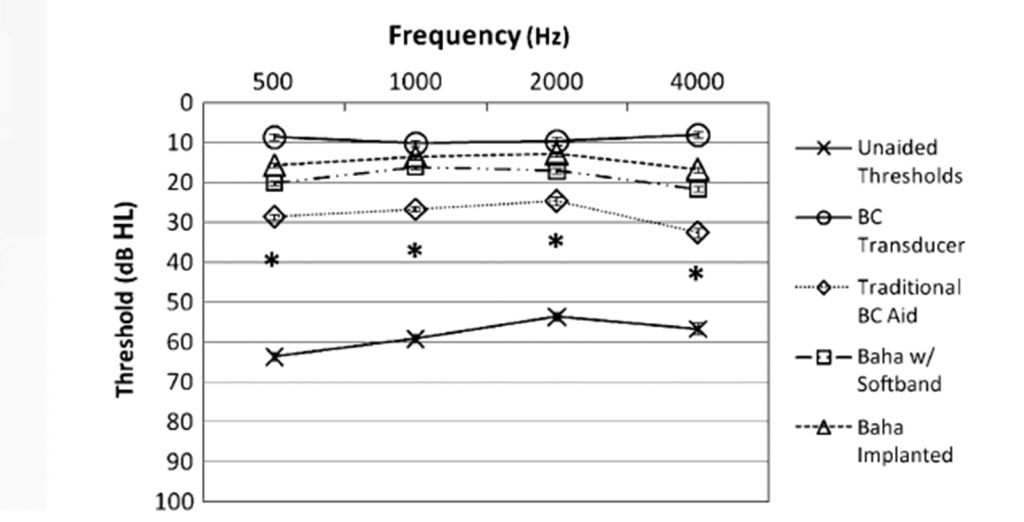Related Products
For Professionals
- Amplification
- Assessment of Student Skills, Challenges, Needs
- Early Childhood: Infants, Toddlers, Preschool
- Hearing Loss – Identification, Impact and Next Steps
- IDEA Law Summary Information
- Language and Speech Development Issues
- Legal Issues in Serving Children with Hearing Loss
- Listening (Auditory Skills) Development
- Planning to Meet Student Needs
- Self-Advocacy Skills for Students with Hearing Loss
- Self-Concept: How the Child with Hearing Loss Sees Himself
- Social Skills
- Speech Perception & Learning
Related Teacher Tools Takeout Items
Atresia, Microtia: Permanent Conductive Hearing Loss
2 Types of Hearing Loss

- Imperfections in the development of the hearing nerve causing sensorineural hearing loss
- Malformations of the outer or middle ear causing permanent conductive hearing loss

This webpage describes issues related to permanent conductive hearing loss only.
Microtia = “small ear” – It comes in different grades in terms of how much the outer ear is underdeveloped. Microtia is usually accompanied by aural atresia or ear canal stenosis (narrowed ear canal, no hearing change).
Atresia – Aural atresia refers to the absence an external ear canal – always results in hearing loss. Often also malformation of the external ear and middle ear, but the inner ear and auditory nerve are frequently normal.
A narrowed ear canal is called a stenotic canal or referred to as ear canal stenosis, which may not affect hearing.
- Congenital microtia/aural atresia is rare with an incidence of 1:10,000 births
- More than 75% of these cases are unilateral, resulting in maximum conductive hearing loss (around 60 dB HL)
- In approximately 25% of cases, the “normal” ear in patients who have one-sided may also have a hearing loss on their normal appearing ear.
Accompanying aural atresia:
- Approximately 12% have a heart deformation
- Approximately 8% have a kidney deformation
- Greater risk to develop cholesteatoma
Atresia and microtia may be associated with syndromes including: Treacher Collins, Crouzon’s, Apert’s, Klippel-Feil, Preiffer
Website for families of children with microtia or atresia: www.earcommunity.com
Improvement via Reconstructive Surgery for Children with Deformed Ears
- Ability to listen binaurally was measured after surgery for unilateral conductive HL – results within the normal range
- No difference in outcomes based on age at time of surgery – 10 yrs to 45 yrs
- Conclusion – no convincing evidence of benefit of early reconstructive surgery for unilateral conductive hearing loss
- Reconstructive surgery for bilateral conductive hearing loss results in worse hearing ability than that achieved from bone-anchored hearing solutions (BAHA)
- BAHA eliminates the conductive hearing loss at most frequencies versus 25-30 dB of conductive hearing loss remaining after reconstructive surgery (this is true only after the BAHA has been implanted).
Permanent conductive hearing loss can also be caused by malformation of or damage to the middle ear structures. Examples would be congenital or early onset of otosclerosis (calcium deposits develop on middle ear bones), middle ear structures damaged due to cholesteatoma, or changes to the eardrum and ossicles due to continuous middle ear disease (chronic ear infections).
Amplification Options for Children with Conductive Hearing Loss
Did you know?
2 Ears 2 Learn
2 Ears 2 Learn is a 501(c)(3) non-profit organization that assists eligible families of children with aural atresia obtain a bone conduction hearing device (aka BAHA or Pronto Pro) at no cost. The organization refurbishes bone conduction devices for families who cannot afford a new processor, or whose insurance company has denied coverage. The group has helped children in Idaho for 2 years and is now expanding nationwide. The organization is run by Dr. Russell Griffiths, MD, board certified plastic and reconstructive surgeon. To obtain patient brochures, or for more information, visit www.2ears2Learn.org or phone 208-949-6975.
1. Standard hearing aids, especially if the hearing loss is not at the maximum conductive hearing loss level (loss is better than 50+ dB HL)
2. CROS hearing aid (for unilateral issues) has been found to be ineffective or detrimental to listening for school-age children in typical classroom settings
3. Traditional bone conduction hearing aid
4. BAHA with soft band
5. BAHA implanted (i.e., Oticon Ponto)

- The anchoring the device to bone provides an advantage of 10 to 15 dB, especially at the high frequencies of vital importance to proper speech recognition in noise.
- Compared to conventional bone conductors, the BAHA system has better gain at the high frequencies and less distortion.
- Surgical options to open up the ear canal typically does not restore normal hearing (-10 – +15 dB HL) nor does a traditional bone conduction hearing aid whereas a bone anchored device can improve hearing to approximately 15 dB HL
Research results:
Support for Families:
The Ear Foundation: BAHA Users Support
Website for families of children with microtia or atresia: www.earcommunity.com


